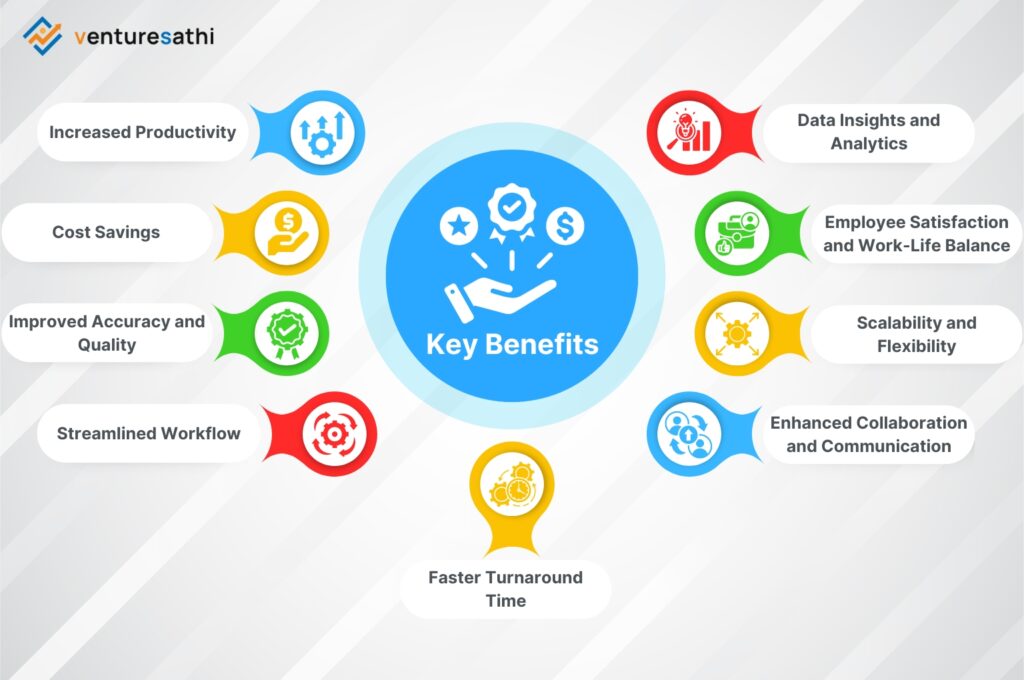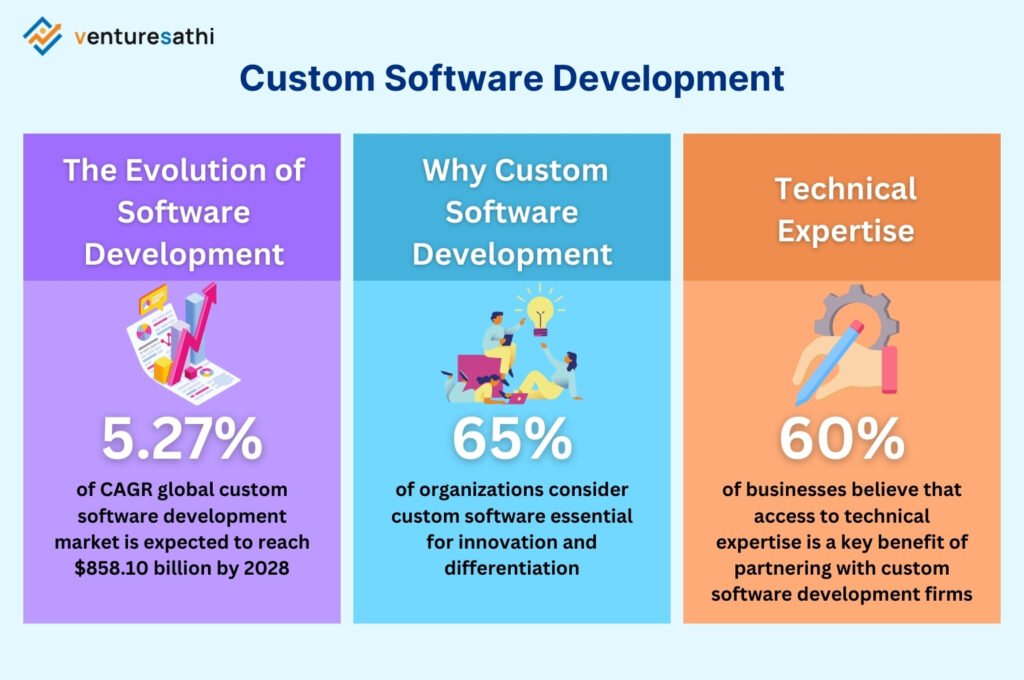Introduction
Property viewing has traditionally been a time-consuming and logistically challenging process for buyers and sellers. However, virtual tours have revolutionized the real estate industry by offering convenience, accessibility, and an immersive experience. These digital tools allow prospective buyers to explore properties from the comfort of their homes, allowing them to visualize spaces, assess layouts, and gauge the overall ambiance without physically visiting multiple properties. This has transformed the way people explore and evaluate properties, offering a more immersive and efficient way to view properties.
The emergence of virtual tours signifies a paradigm shift in the real estate landscape, providing a dynamic and interactive platform that transcends the limitations of conventional property viewings. This technology not only benefits buyers but also empowers sellers to showcase their properties more compellingly and engagingly, reaching a wider audience, and making a lasting impression.
As we delve deeper into the transformative power of virtual tours, it becomes evident that they are not merely a technological advancement but a catalyst for redefining the way we approach property transactions. In this exploration, we will uncover the various facets of virtual tours, from their impact on buyer decision-making to the enhanced marketing opportunities they present for real estate professionals. Join us on this journey into the future of property viewing, where innovation and convenience converge to create a more seamless and enriching experience for all involved.
Stay ahead of the curve as we explore the intersection of technology and real estate, offering you a front-row seat to the evolution of this exciting and ever-changing landscape. Join us on a journey to discover the tech trends and software solutions propelling the real estate industry into the future!
Transforming Buyer Experience in Real Estate
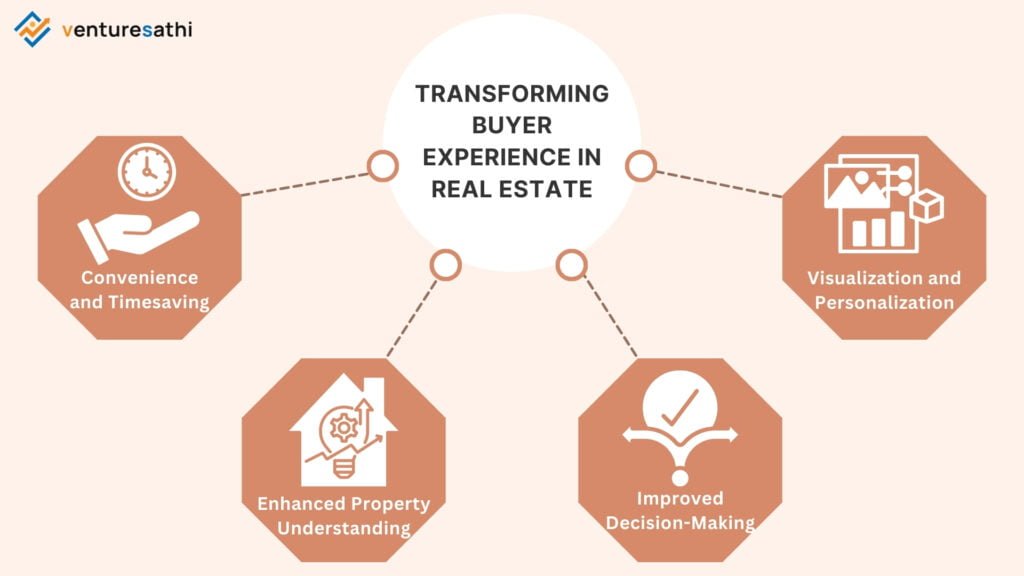
1. Convenience and Timesaving:
In the realm of property exploration, time is often a precious commodity. Virtual tours redefine the buyer experience by offering the luxury of exploring properties at any time and from anywhere. No longer confined to rigid schedules or dependent on the availability of real estate agents, prospective buyers can navigate through potential homes with just a few clicks. Whether it’s a late-night escapade into dream homes or a quick virtual visit during a lunch break, the convenience provided by virtual tours ensures that property exploration aligns with the buyer’s schedule, adding a touch of flexibility to the traditionally time-consuming process.
2. Enhanced Property Understanding:
Virtual tours transcend the static images and floor plans of traditional property listings. They provide an immersive experience, allowing buyers to gain detailed spatial awareness and a genuine feel for the home. Walking through rooms virtually, users can gauge the flow of space, assess the natural light, and get a sense of the overall ambiance. This depth of understanding goes beyond what static visuals can offer, enabling buyers to form a more profound connection with the property before deciding to physically visit. It’s not just about seeing; it’s about experiencing the potential home in a way that static media cannot capture.
3. Improved Decision-Making:
Virtual tours act as a powerful tool in streamlining the decision-making process. By exploring properties virtually, buyers can identify potential deal-breakers or hidden gems early on in their search. This early vetting reduces the need for multiple in-person viewings, saving both time and effort. Virtual tours empower buyers with a more informed perspective, allowing them to prioritize and shortlist properties more effectively. The result is a more efficient and focused approach to the property-buying journey, with a reduced likelihood of wasting time on visits to properties that ultimately do not meet their criteria.
4. Visualization and Personalization:
Beyond exploring the existing layout of a property, virtual tours enable buyers to engage in a unique form of visualization and personalization. Prospective homeowners can mentally arrange furniture, envision renovations, and personalize spaces according to their preferences. This not only sparks creativity but also assists buyers in visualizing how a property could become their ideal home. The ability to virtually experiment with different layouts and styles enhances the emotional connection to a property, making it easier for buyers to imagine themselves living in the space. Virtual tours, therefore, serve as a powerful tool for buyers to translate their vision into a tangible reality, fostering a deeper sense of attachment to the homes they explore.
In essence, the transformation of the buyer experience through virtual tours is a journey from mere observation to active engagement, offering a level of convenience, insight, and personalization that goes beyond the limitations of traditional property viewing methods.
Revolutionizing Real Estate Agents
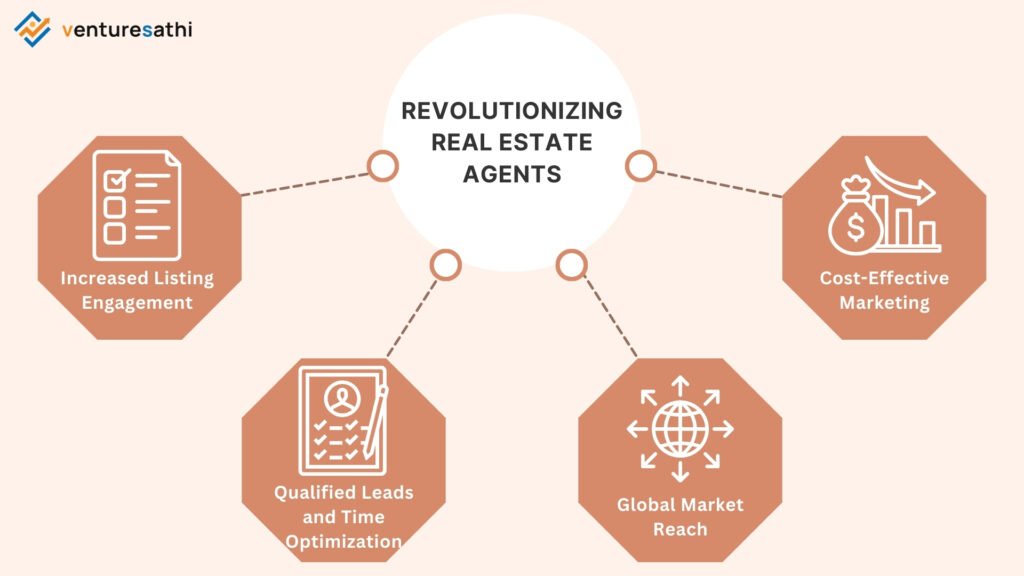
1. Increased Listing Engagement:
Virtual tours are the modern real estate agent’s secret weapon for standing out in a crowded market. With interactive and immersive virtual tours, agents can elevate their property listings from static to dynamic. These engaging visual experiences capture the attention of potential buyers, providing them with an in-depth exploration of properties that static images simply cannot match. By embracing virtual tours, real estate agents transform their listings into captivating digital showcases, drawing in more prospective buyers and setting their properties apart in a visually competitive landscape.
2. Qualified Leads and Time Optimization:
Virtual tours pave the way for a more efficient and targeted approach to lead generation. Real estate agents can use virtual pre-qualifications to gauge the interest and seriousness of potential buyers. This not only helps prioritize leads but also optimizes the use of the agent’s time. By focusing on those who have already shown a genuine interest through virtual exploration, agents can streamline their efforts and devote more attention to clients who are more likely to convert, ultimately enhancing productivity and maximizing the impact of their services.
3. Global Market Reach:
The reach of virtual tours extends far beyond local borders. Real estate agents can showcase their properties to a global audience, tapping into an international market. Virtual tours break down geographical barriers, allowing agents to present their listings to potential buyers from different corners of the world. This expanded reach not only broadens the agent’s potential client base but also positions them as forward-thinking professionals who leverage technology to offer a more inclusive and accessible real estate experience.
4. Cost-Effective Marketing:
Virtual tours provide a cost-effective alternative to traditional marketing methods, particularly physical open houses. By embracing virtual showcases, real estate agents can reduce their dependence on costly in-person events while still delivering a rich and engaging experience to potential buyers. The savings in terms of time, resources, and logistics contribute to a more streamlined and economical marketing strategy. This not only benefits the agent’s bottom line but also aligns with the growing trend of digital-first approaches in the real estate industry.
If you’re looking to craft personalized software solutions, look no further – Venturesathi is the perfect partner for your journey. Let’s bring your custom software dreams to life together!
Technology Advancements in Real Estate
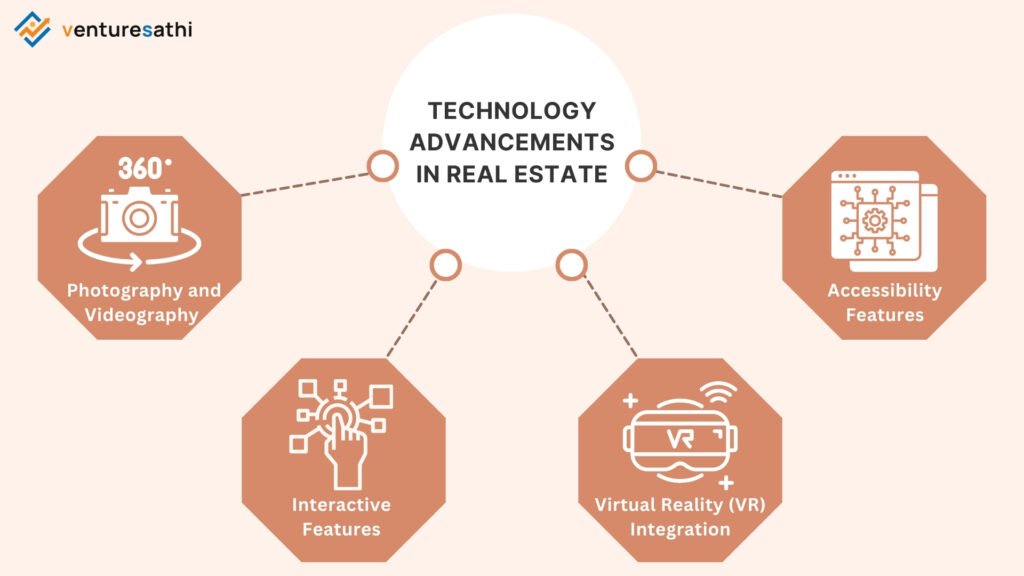
1. 360° Photography and Videography:
Enter the era of realism with 360° photography and videography, where static images transform into dynamic, seamless walkthrough experiences. Traditional photographs capture moments, but 360° technology captures entire environments. Prospective buyers are no longer restricted to glimpses; they can virtually stroll through every nook and cranny of a property. The immersive nature of 360° visuals allows users to control their exploration, turning the property viewing experience into a personalized journey, fostering a sense of connection and engagement that transcends conventional imagery.
2. Interactive Features:
Virtual tours are not just about looking; they’re about interacting. Enter the realm of interactive features, where hotspots become gateways to a wealth of information. Agents can strategically place hotspots within the virtual environment, offering details about specific features, floor plans, or even potential renovation ideas. This level of interactivity transforms the passive act of viewing into an active and engaging experience. Users can seamlessly navigate from room to room while gaining insights that go beyond the visual, enhancing their understanding and appreciation of the property.
3. Virtual Reality (VR) Integration:
Elevate the virtual tour experience to unparalleled heights with Virtual Reality (VR) integration. Now, potential buyers can step into a property from the comfort of their own homes, experiencing the space as if they were physically present. VR technology adds an extra layer of authenticity, allowing users to perceive depth, scale, and spatial relationships in a way that standard virtual tours cannot replicate. This immersive leap into VR transforms property exploration into a truly unforgettable and authentic journey, setting a new standard for virtual engagement in the real estate industry.
4. Accessibility Features:
In the pursuit of inclusivity, virtual tours embrace accessibility features to ensure that everyone, regardless of ability, can participate in the property viewing experience. From alt-text descriptions for visually impaired users to keyboard navigation for those who may not use a mouse, these features create a virtual environment that accommodates diverse needs. By prioritizing accessibility, virtual tours become a tool for equal opportunity, allowing a broader audience to engage with and appreciate the nuances of a property, fostering a more inclusive and socially responsible approach to technology in real estate.
Explore the thrilling world of real estate tech and software through our engaging blog! Uncover the latest innovations reshaping property transactions and management. Stay ahead with insights into the dynamic intersection of technology and real estate.
List of Virtual Tour Software in Real Estate
1. VR maker – VR Maker is a user-friendly software that allows users to create immersive virtual tours using multimedia elements like 360° photos and videos. It’s ideal for real estate professionals and businesses to showcase dynamic spaces.
2. Eyespy360 – Eyespy360 is a user-friendly virtual tour platform that offers a seamless, immersive experience. It supports 360° photos and videos, and features live guided tours, making it ideal for real estate agents and others seeking to enhance their virtual tour presentations.
3. Matterport – Matterport is a leading virtual tour platform using 3D scanning to create realistic spaces, offering immersive walkthroughs, measuring tools, annotation features, and highlight reels. It’s preferred by real estate professionals, architects, and businesses for comprehensive, interactive views.
4. Real tour vision – Real Tour Vision is a flexible virtual tour software for real estate and hospitality industries, allowing users to create immersive tours using various media like panoramic images, videos, and aerial drone footage, with features like floor plans and interactive maps.
5. Shapespark – Shapespark is a popular virtual tour software for architects, interior designers, and real estate professionals, offering high-quality visualizations and real-time rendering. It allows users to create interactive 3D walkthroughs, showcasing spaces and design elements in detail.
Challenges and Future Trends in Real Estate
Potential Limitations of Virtual Tours:
While virtual tours have undeniably revolutionized property viewing, they are not without their challenges. One of the primary obstacles is the reliance on internet access. In areas with limited connectivity, potential buyers may struggle to fully enjoy the immersive experience offered by virtual tours. Technological barriers, such as outdated devices or software, can also hinder the seamless engagement that virtual tours promise. These challenges emphasize the need for continued efforts to bridge the digital divide, ensuring that the benefits of virtual tours are accessible to a broad spectrum of users.
Upcoming Trends:
As technology continues to evolve, so do the capabilities of virtual tours. One exciting trend on the horizon is the integration of artificial intelligence (AI) in virtual staging. AI-powered tools can analyze spaces and recommend personalized virtual staging options, allowing potential buyers to visualize a property with furniture and decor that suits their taste. This not only enhances the aesthetic appeal of virtual tours but also assists buyers in envisioning the full potential of a space, bridging the gap between imagination and reality.
Another trend gaining momentum is the implementation of AI for personalized recommendations. By analyzing user preferences, search history, and behavior within virtual tours, AI algorithms can curate tailored property suggestions. Offering users intuitive, personalized property discovery beyond traditional filters for tailored experiences that align with preferences.
Discover the profound influence of data analytics on the real estate industry by delving into our blog. Unlock intricate details and insights that illuminate the transformative power of data analytics in the real estate landscape.
End Note
In conclusion, the challenges posed by internet access and technological barriers are opportunities for innovation and improvement. As technology becomes more inclusive and accessible, virtual tours will likely overcome these hurdles. This will open the doors to a broader audience and democratize the property viewing experience.
The future of property viewing is teeming with potential, fueled by trends like AI-powered virtual staging and personalized recommendations. These advancements not only enhance the visual appeal of virtual tours but also cater to the individual needs and tastes of buyers, making the property exploration process more engaging and efficient.
Virtual tours are more than just a technological trend; they represent a fundamental shift in real estate. They offer buyers unprecedented convenience and provide powerful marketing tools for real estate professionals. Virtual tours also pave the way for a more inclusive and personalized property viewing experience. As we face challenges and embrace new trends, virtual tours are set to redefine the real estate landscape. They will usher in an era where innovation and imagination shape how we envision and acquire homes.
Transform your real estate business with the groundbreaking potential of software solutions. Uncover the keys to success by delving into our page. Contact Us Now to stay ahead in the fiercely competitive residential arena!

